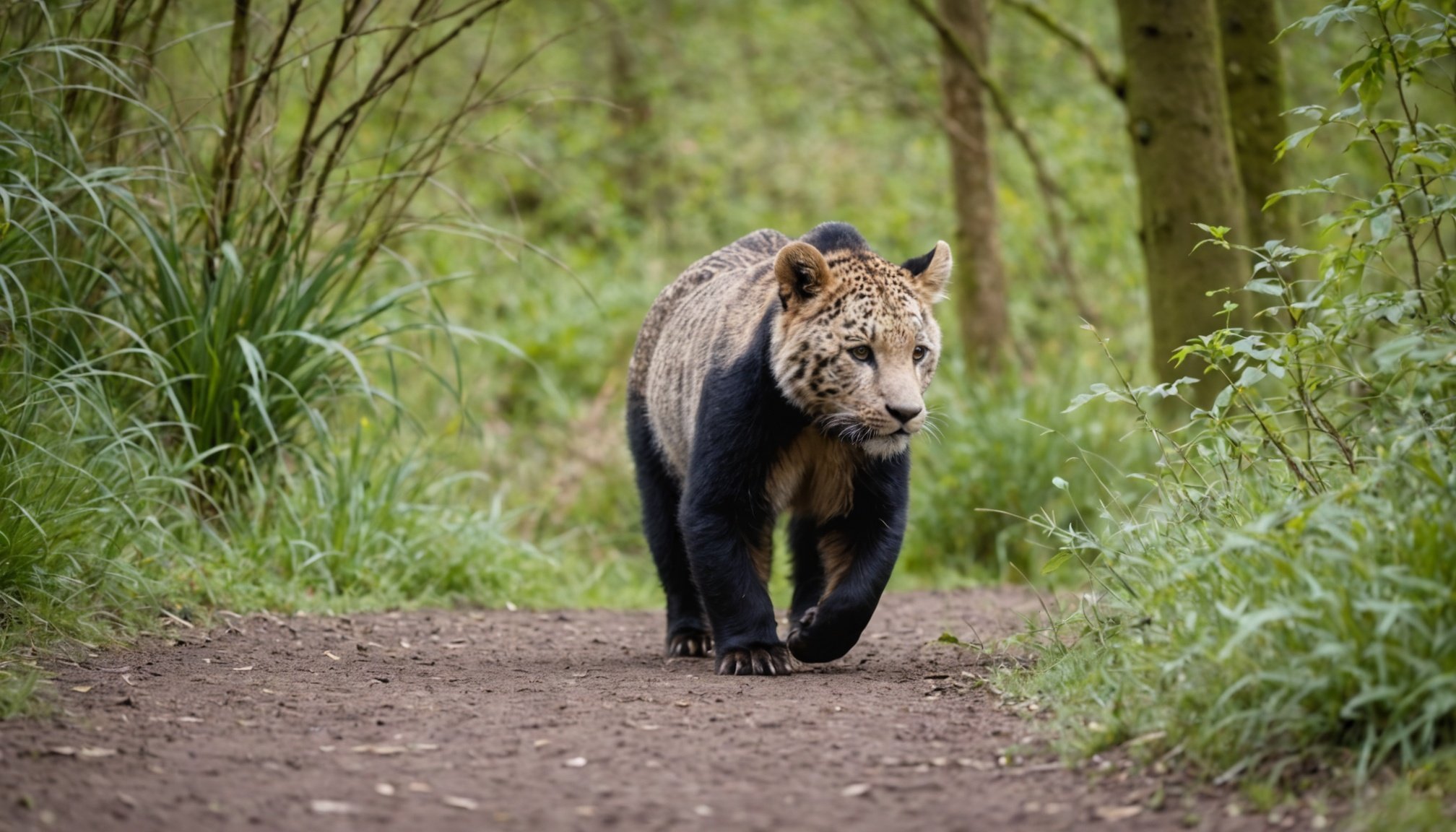Prevention Strategies for Animal Escapes
When it comes to preventing animal escapes, robust safety measures and well-defined wildlife park protocols are crucial to maintaining safety. The very first line of defence includes secure enclosures and barriers tailored to the specific needs of each species. These barriers must not only be durable but also high enough to discourage attempts by animals to breach them.
Regular maintenance and inspections of these barriers and habitats are vital. By routinely checking for wear and tear, staff can promptly address any weak points that may compromise security. Consistent upkeep ensures that no cracks or damages go unnoticed, reducing the risk of escapes.
Also to discover : Groundbreaking discoveries: uk researchers reveal insights into urban hedgehog population trends
Incorporating natural deterrents and environmental design can further enhance safety. By aligning habitat design with natural animal behaviour, parks can discourage escape attempts. For instance, considering the animal’s natural predators or environmental preferences can influence the layout, reducing the likelihood of animals attempting to leave their enclosures.
These methods collectively form robust prevention strategies. They protect not only the visitors and staff but also the animals themselves, ensuring a safe coexistence within wildlife parks. Through vigilance and strategic habitat planning, parks can effectively address the challenge of animal containment.
Also to discover : Unraveling the effects of uk farm subsidies on bird populations: a comprehensive analysis of nature”s equilibrium
Emergency Protocols for Handling Escapes
In the rare event of an escape, emergency response plans are pivotal. These serve as a step-by-step guideline for staff, ensuring a swift reaction. Immediate actions include alerting the control room and initiating escape protocols.
-
Incident Management: Staff are trained to assess the situation promptly. Identifying the escapee’s type is crucial, which informs subsequent steps. For instance, a large animal moves differently than a smaller one, and that must be considered in the response strategy.
-
Coordination with Emergency Services: Local authorities and emergency services play a vital role. Their expertise is critical in containing and controlling the situation. Once they are notified, collaboration is seamless. This synergy enhances safety for both the public and the concerned animal.
-
Communication with Park Management: Effective communication is indispensable. Park management should be constantly informed of evolving situations. This ensures proper resource allocation and decision-making. Information relayed across teams needs clarity and precision.
Regular drills are essential for reinforcing these protocols, minimizing risks, and promoting a cohesive response. By anticipating every variable, the system operates smoothly under pressure. This integrated approach ensures control and safety, even in unexpected circumstances.
Staff Training and Preparedness
Staff training is pivotal in ensuring safety. Comprehensive training programs are essential at all staff levels to equip employees with the necessary skills and knowledge. These programs should be structured to cover incident responses, emergency protocols, and safety equipment usage, ensuring a well-rounded approach.
Regular preparedness drills play a critical role in testing these skills. Drills should simulate real-life escape scenarios, helping employees practice their responses under pressure. By frequently engaging in these exercises, staff can identify weaknesses and develop a more instinctive reaction to emergencies.
Creating a culture of safety and vigilance is fundamental. Encouraging open dialogue about safety concerns and promoting a shared sense of responsibility contributes to a safer environment. Employees who feel empowered to speak up are more likely to prevent accidents.
Implementing the above measures not only safeguards personnel but also reinforces the overall security strategy. Investing in staff training results in confident and capable employees, prepared to handle unforeseen situations adeptly. In turn, this leads to a more secure and efficient organisation, aligning with both safety priorities and business goals.
Case Studies of Past Incidents
Past incidents involving wildlife escapes in UK parks have served as important lessons for improving safety protocols. Notable incidents include the escape of a Siberian tiger from Colchester Zoo in 1987, which required significant efforts to safely reunite the animal with its habitat. Responses in such scenarios vary greatly, but they always emphasize the utmost urgency and precision.
Upon examining these wildlife escapes, one can discern several key strategies in ensuring rapid and safe resolutions. Swift communication between park staff and local authorities has proven crucial. In the 2013 case where a lynx escaped from Dartmoor Zoo, helicopters were deployed to quickly locate the animal, showcasing a highly effective coordination response.
The outcomes of these dangerous scenarios have yielded valuable lessons learned. Critical takeaways include enhancing enclosures with reinforced barriers, improving surveillance systems for real-time, actionable insights, and conducting regular drills to prepare staff for emergencies. Moreover, public education initiatives about wildlife safety protocols have become integral to promoting collective responsibility.
By understanding past incidents, parks can bolster their preparedness and minimize risks, ultimately ensuring the safety of both wildlife and visitors. This ongoing commitment to refining safety measures reflects a proactive approach that prioritizes prevention and readiness.
Safety Measures for Visitors
Ensuring visitor safety in parks is a multifaceted task involving the creation of a comprehensive code of conduct. This code outlines essential behaviors and practices for both everyday visits and emergency situations. By adhering to these guidelines, visitors not only protect themselves but also contribute to the overall safety and enjoyment of the park environment.
Communication is crucial in maintaining public awareness. Parks should implement real-time update systems, such as apps or digital signboards, to alert visitors of any incidents. These tools can quickly disseminate important safety information, including weather warnings or temporary closures, helping visitors make informed decisions about their activities.
Designated safe zones and clearly marked evacuation routes are vital elements of any safety plan. These areas provide refuge and direction in case of an emergency, offering visitors clear guidance on where to go for safety. Signage should be visible and easy to understand, ensuring that even those unfamiliar with the park can find refuge quickly.
By integrating these strategies, parks not only reinforce public awareness but also foster a culture of proactive safety. This holistic approach helps mitigate risks and enhance the overall visitor experience.
Legal Implications and Regulations
Navigating the complex landscape of legal responsibilities and regulations is crucial for wildlife park operators. These regulations are designed to ensure the safety of both the animals and the public. They often include requirements regarding enclosure standards, contingency plans for escape incidents, and protocols for animal welfare.
Non-compliance with these laws can have significant consequences. In the event of an animal escape, failure to adhere to established regulations may result in hefty fines, legal actions, or even the suspension of park operations. Such incidents not only tarnish reputations but also impact long-term viability.
To mitigate legal risks, park operators must prioritize compliance. Regular audits and inspections should be conducted to ensure all aspects of the park meet current legal standards. Additionally, education and training programs for staff can prevent potential breaches. Clear contingency plans for emergencies, including designated roles and responsibilities, are essential for quick and effective responses.
Engaging with legal experts and industry consultants can also provide invaluable guidance. Staying informed about changes in legislation and adapting accordingly can safeguard against unwanted legal challenges, ensuring the park runs smoothly with minimal risk.
Communication Strategies During an Escape
When managing an escape situation, well-defined communication plans are essential to ensure safety and order. Establishing dependable internal and external communication channels is crucial. For internal stakeholders, clarity in roles and responsibilities is vital, while external communication involves keeping the public and media informed with accuracy and urgency.
Real-time information updates play a pivotal role during such events. Ensuring timely updates for staff and visitors is crucial to maintaining order and reducing panic. This includes using text alerts, PA systems, or dedicated apps to disseminate information swiftly. Real-time communication helps in aligning everyone to the current status of the situation and what actions need to be undertaken.
Managing media relations is another key element. Proactively providing information to the media helps in shaping public perceptions and avoiding misinformation. Having a designated spokesperson ensures that all stakeholder updates are consistent and controlled. This approach aids in addressing concerns, quelling rumours, and maintaining trust.
Each minute during a crisis counts. The promptness and accuracy of all communication can prevent misunderstandings and ensure the safety and security of all involved. Properly executed communication strategies highlight the importance of preparedness and reactivity in challenging scenarios.











